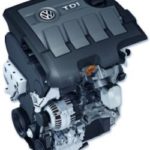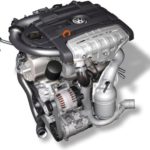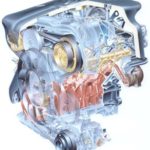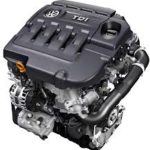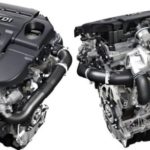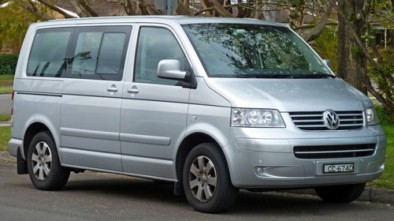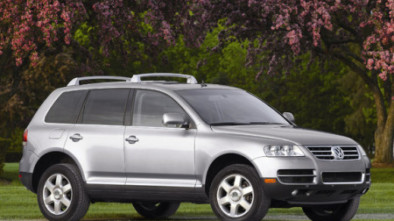Vw Karmann Ghia - elegant Beetle - model history
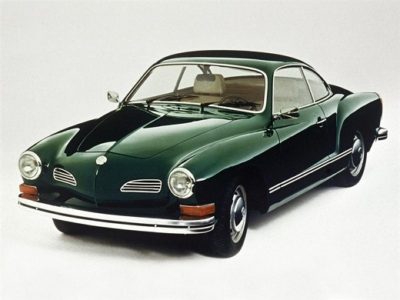
Vw Karmann Ghia
It all started in the late 1950s. Germany was rapidly recovering from the mindless policy of war, and the ruins and ashes began to replace the newly constructed factory halls. As the best and most promising export product, VW Buba immediately imposed itself, which (like the entire auto industry) was the basis of the new German economy. However, despite the excellent sales results, it became clear to the VW management that sooner or later, the market will demand slightly more luxurious and elegant cars, which will be a challenge for VW to which they will have no answer. Creating a special model is always an expensive and time-consuming process that often does not pay off, and the only solution is to use the existing mechanics with a different body. Sometime around that time, Wilham Karmann II, who was the head of the Karmann family company from Osanbruck in Germany, approached the management of VW, with a proposal for the joint production of a model based on the tested Buba mechanics. In 1980, the first negotiations between Karmann and VW began, which had already begun a successful cooperation in the production of the Beetle Convertible (which until the very end of production, in XNUMX, was conducted exclusively at Karmann). At that time, the problem was not production capacities or technical issues, simply, the design of the future car did not even exist.
Soon, at the suggestion of Herr Wilhem Karmann II, the Italian body house Ghia presents a prototype model on a slightly modified beetle chassis. VW management liked the new model very much and decided to quickly start finishing the prototype and presenting it to the public. This happened in 1955 in front of an audience that did not expect this move, especially not from a manufacturer such as VW at the time, which was known as a factory of reliable, uniform, boring and cheap vehicles.
The full name of the new model was VW Karmann Ghia Type 14 and the elegant lines completely hid the "plebeian" origin. Although it was originally planned that this model would have the same 1,3-liter bug engine with 32 hp, the designers still decided to install a 1,5-liter boxer with 40 hp. Still, it was still not enough power for a sports coupe, as the design suggested, and the Karmann Ghia was only a shade faster and more powerful than the ordinary and painfully slow Buba.
The market reacted well to the Vw Karmann Ghia, and in the first year of production, as many as 10 cars found buyers, far exceeding even the boldest expectations. Simply, the combination of reliability, Italian style and beautiful lines proved to be a bestseller. Although the price of the Karmann Ghie Type 000 was like the price of two VW Beetle, buyers were willing to pay so much for one nice but rather weak car. Sales have started off well, not only in Europe but also in the traditionally good Volkswagen export markets of North and South America, especially in the US and Brazil (where Type 14 will be produced sometime).
In 1957, a convertible version of the Vw Karmann Ghia arrived, which only expanded the charm and appeal of this car. Two years later, the first slight redesign of the Vw Karmann Ghia took place, which included a modification of the opening in the front of the car, popularly called "nostrils", slightly larger headlights and a different door shape, which are one of the few visible modifications that this car will undergo during its productions.
In the late 14s, Karmann Ghie's humble racing career began. Modest, because this car never had racing potential (neither in terms of the engine nor in terms of construction) and its execution on the track always required serious modifications. Most often, Porsche engines were transplanted into the Karmann Ghie and with them alone, the Type XNUMX was competitive. Some of the most famous Brazilian car aces have even started their careers on cars like this.
In 1967, there were more serious mechanical changes in the Karmann Ghia, when disc brakes became standard and the platform was modified for greater strength and safety. Yet by the end of that decade, the final end of Karmann Ghie could already be monitored. By design, the car was obsolete, and mechanically and motorically it could not withstand the competition of younger and more powerful cars. Competitors from England (Triumph Spitfire and MG B) or ItalyFiat 124 Spider and the Alfa Romeo Spider) were all more modern, more powerful, faster and better constructed.
After a couple of minor body redesigns, the production of the Karmann Ghie Type 14 was shut down at the end of 1974, after 19 years of production and nearly 450 made cars (000 convertibles and 80 coupes), a huge success and a result worthy of respect.
Karmann Ghie's place in the history of motoring is secured by the fact that it is one of the few models that has managed to combine elegant and beautiful body lines with reliable large-series mechanics. The only drawbacks that could be mentioned in the story of the Vw Karmann Ghia are the small comfort (although the Beetle was not a bit more spacious), relatively expensive parts and the tendency to rust, which is the fate of all body-built cars. The parts of the mechanics (engine, gearbox, suspension) are identical to the bug so they are not expensive and are everywhere, but the problem is the parts of the bodywork that is characteristic only of this model. However, the opinion is that this car is definitely a classic, worth keeping and tidying up, so if you meet it in a neglected yard or a dusty garage, be sure to try to save it. There were a lot of them on our roads and one Karmann Ghia would look very nice and decent in today's traffic jam….
Retrieved from: autocaffe.net
Recommendation of similar texts:

Hi there, I am Mladen and I am an auto enthusiast. I started this blog years ago to help like minded people share information about latest cars, car servicing ideas, used car info, exotic cars, and auto technology. You will find helpful articles and videos on a wide variety of cars - Audi, Mercedes, Toyota, Porsche, Volvo, BMW and much more. Ping us if you have anything cool to share on latest cars or on how to make older cars more efficient, or just want to say hi!


